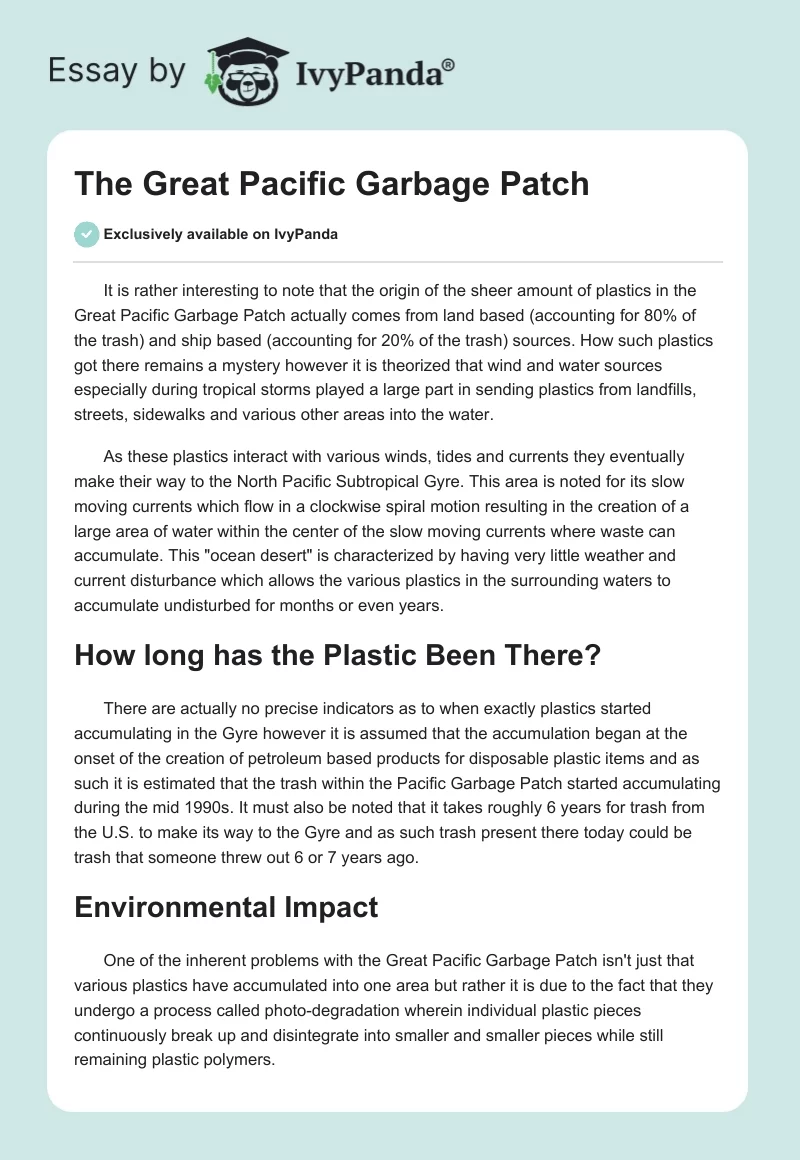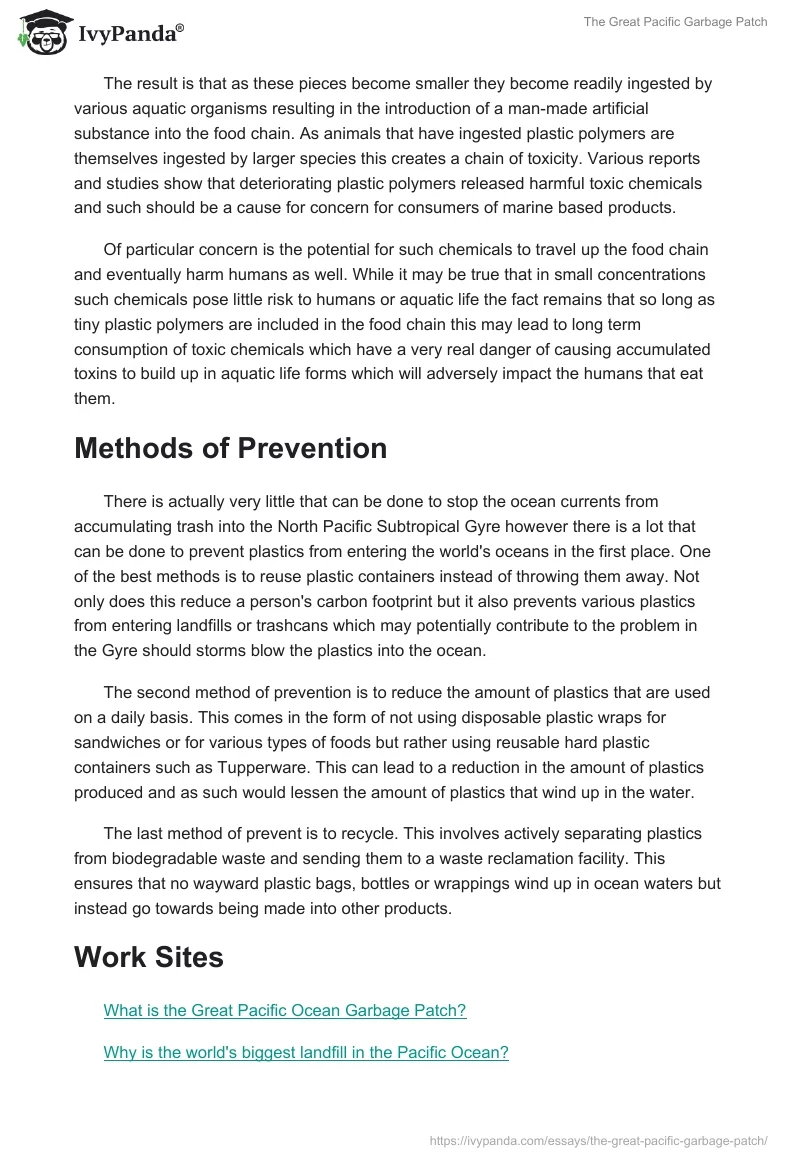It is rather interesting to note that the origin of the sheer amount of plastics in the Great Pacific Garbage Patch actually comes from land based (accounting for 80% of the trash) and ship based (accounting for 20% of the trash) sources. How such plastics got there remains a mystery however it is theorized that wind and water sources especially during tropical storms played a large part in sending plastics from landfills, streets, sidewalks and various other areas into the water.
As these plastics interact with various winds, tides and currents they eventually make their way to the North Pacific Subtropical Gyre. This area is noted for its slow moving currents which flow in a clockwise spiral motion resulting in the creation of a large area of water within the center of the slow moving currents where waste can accumulate. This “ocean desert” is characterized by having very little weather and current disturbance which allows the various plastics in the surrounding waters to accumulate undisturbed for months or even years.
How long has the Plastic Been There?
There are actually no precise indicators as to when exactly plastics started accumulating in the Gyre however it is assumed that the accumulation began at the onset of the creation of petroleum based products for disposable plastic items and as such it is estimated that the trash within the Pacific Garbage Patch started accumulating during the mid 1990s. It must also be noted that it takes roughly 6 years for trash from the U.S. to make its way to the Gyre and as such trash present there today could be trash that someone threw out 6 or 7 years ago.
Environmental Impact
One of the inherent problems with the Great Pacific Garbage Patch isn’t just that various plastics have accumulated into one area but rather it is due to the fact that they undergo a process called photo-degradation wherein individual plastic pieces continuously break up and disintegrate into smaller and smaller pieces while still remaining plastic polymers.
The result is that as these pieces become smaller they become readily ingested by various aquatic organisms resulting in the introduction of a man-made artificial substance into the food chain. As animals that have ingested plastic polymers are themselves ingested by larger species this creates a chain of toxicity. Various reports and studies show that deteriorating plastic polymers released harmful toxic chemicals and such should be a cause for concern for consumers of marine based products.
Of particular concern is the potential for such chemicals to travel up the food chain and eventually harm humans as well. While it may be true that in small concentrations such chemicals pose little risk to humans or aquatic life the fact remains that so long as tiny plastic polymers are included in the food chain this may lead to long term consumption of toxic chemicals which have a very real danger of causing accumulated toxins to build up in aquatic life forms which will adversely impact the humans that eat them.
Methods of Prevention
There is actually very little that can be done to stop the ocean currents from accumulating trash into the North Pacific Subtropical Gyre however there is a lot that can be done to prevent plastics from entering the world’s oceans in the first place. One of the best methods is to reuse plastic containers instead of throwing them away. Not only does this reduce a person’s carbon footprint but it also prevents various plastics from entering landfills or trashcans which may potentially contribute to the problem in the Gyre should storms blow the plastics into the ocean.
The second method of prevention is to reduce the amount of plastics that are used on a daily basis. This comes in the form of not using disposable plastic wraps for sandwiches or for various types of foods but rather using reusable hard plastic containers such as Tupperware. This can lead to a reduction in the amount of plastics produced and as such would lessen the amount of plastics that wind up in the water.
The last method of prevent is to recycle. This involves actively separating plastics from biodegradable waste and sending them to a waste reclamation facility. This ensures that no wayward plastic bags, bottles or wrappings wind up in ocean waters but instead go towards being made into other products.
Works cited
Kuchta, D. M. (2022). The Great Pacific Garbage Patch: Overview, Impacts, and Solutions. Treehugger. Web.
Silverman, J. (2023). Great Pacific Garbage Patch: The World’s Biggest Landfill in the Pacific Ocean. HowStuffWorks. Web.


